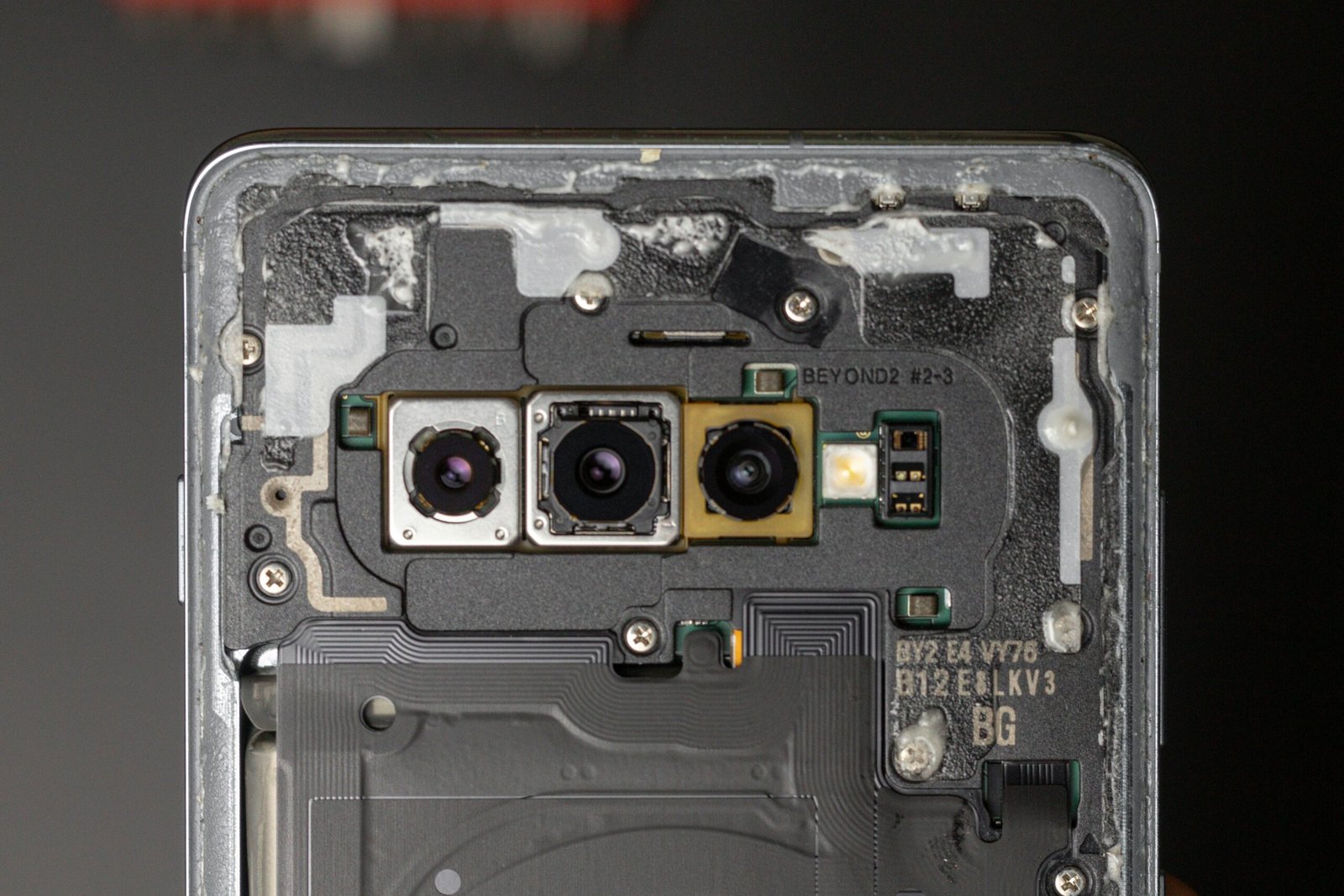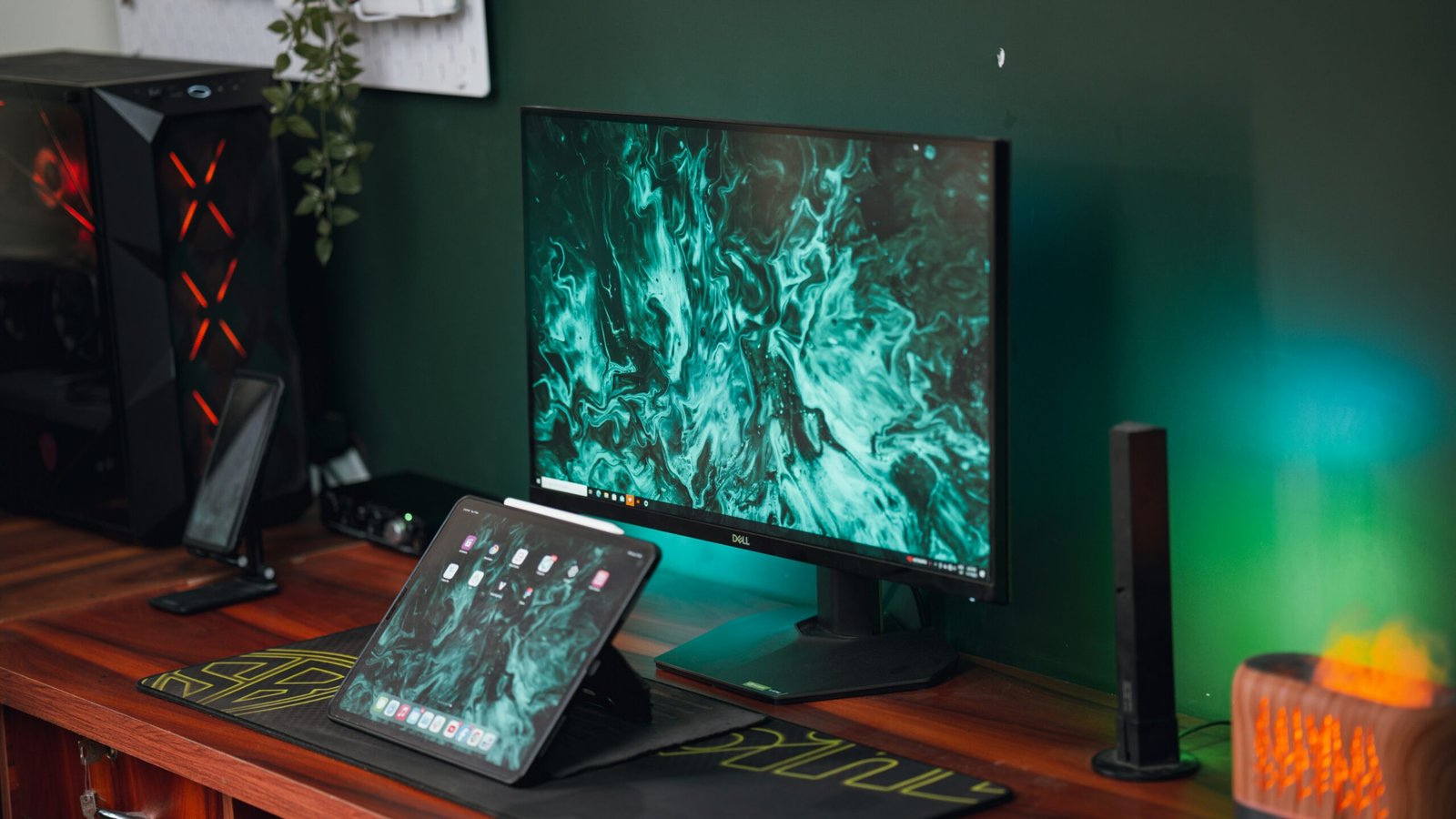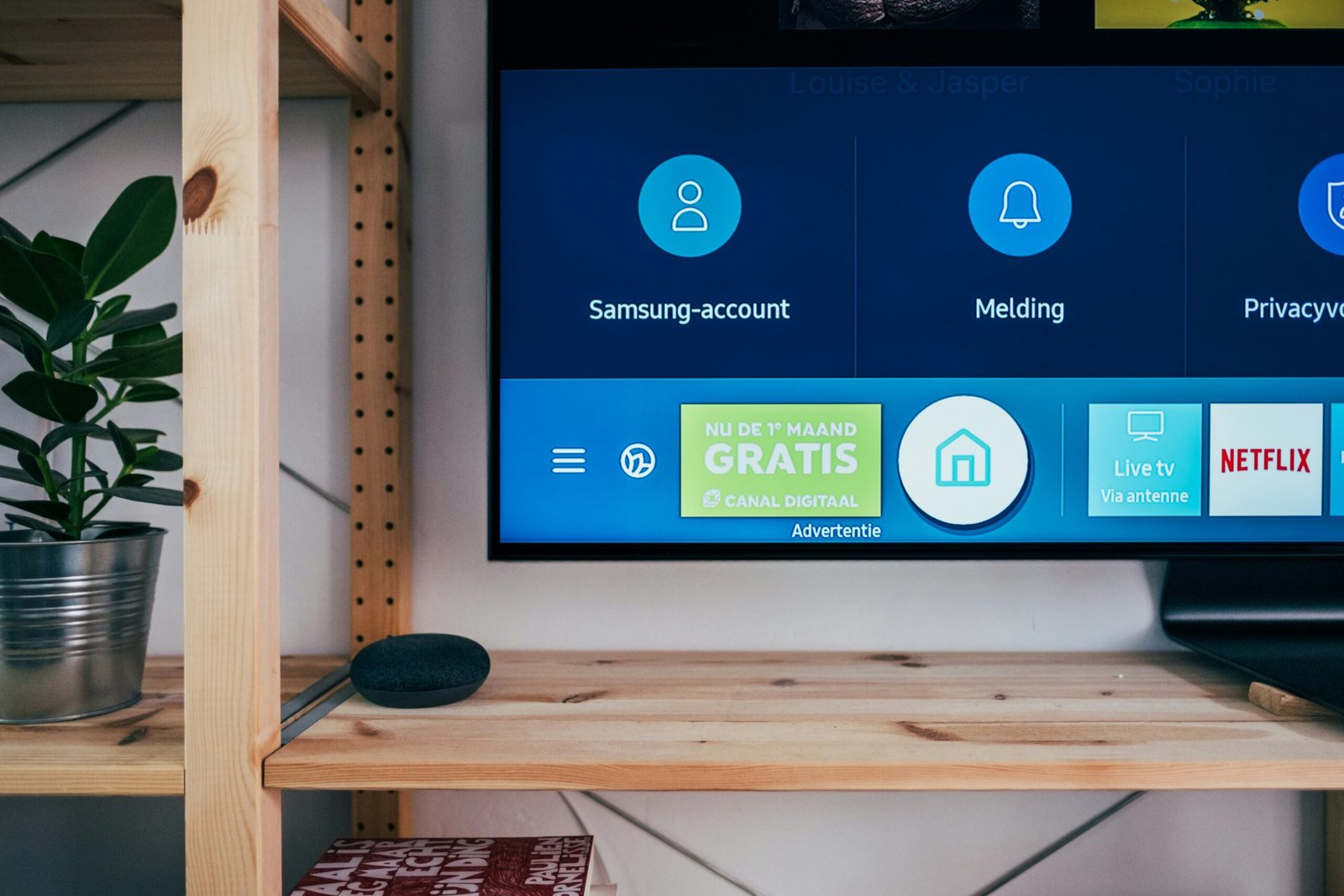Key Considerations When Buying a New Monitor
“`html
Understanding Your Needs and Usage
When contemplating the purchase of a new monitor, the first and foremost step is to meticulously assess your specific usage requirements. This entails an in-depth analysis of your primary usage scenarios, which could range from gaming and professional work to general productivity tasks. Each of these uses demands distinct features and specifications in a monitor.
For gaming enthusiasts, high refresh rates, low response times, and adaptive sync technologies such as G-Sync or FreeSync are essential. These features ensure smooth gameplay and reduce screen tearing, thus enhancing the overall gaming experience. Conversely, if your pursuits are more aligned with professional work like photo or video editing, you’ll need a monitor that boasts superior color accuracy and wide color gamut support. Monitors with IPS panels are particularly known for their excellent color reproduction and wider viewing angles, making them ideal for creative tasks.
General productivity tasks, often encompassing activities like programming, document editing, and web browsing, necessitate a different set of considerations. For these tasks, screen size and resolution can significantly impact workflow efficiency. Higher resolutions like 4K UHD can accommodate multiple windows and provide a crisper display, thereby enhancing productivity. Additionally, ergonomic designs that offer adjustable stands, pivot, tilt, and swivel functionalities can help maintain comfortable viewing positions, preventing strain during prolonged use.
Determining the specific features you need based on your primary usage not only helps in narrowing down the choices but also ensures that you invest in a monitor that enhances your particular activities. Hence, an accurate understanding of your needs is pivotal in making an informed decision when selecting a new monitor.
“`
Choosing the Right Screen Size and Resolution
Selecting the appropriate screen size and resolution is a critical decision when purchasing a new monitor, as it can significantly impact your productivity and comfort. The ideal size largely depends on the available space in your workspace and the distance you plan to sit from the screen.
For standard work setups and moderate viewing distances, a 24-inch monitor is a popular choice, balancing sufficient screen real estate with space efficiency. A step up, the 27-inch monitor, offers more screen space and can enhance multitasking and immersive experiences, making it suitable for both work and gaming. Ultra-wide monitors, typically around 34 inches or larger, provide even more expansive views, beneficial for those who work with multiple windows or require detailed visualization tools.
Resolution options are equally important, influencing the clarity and detail of on-screen content. Full HD or 1080p resolution (1920×1080 pixels) is standard for general use, offering clear visuals for everyday tasks. For enhanced detail, Quad HD (1440p) monitors (2560×1440 pixels) provide greater sharpness, making them favorable for design work and gaming. For the highest clarity, Ultra HD (4K) resolution (3840×2160 pixels) delivers unparalleled detail and depth, ideal for professional photo and video editing, and high-definition entertainment.
The right combination of screen size and resolution should be dictated by your specific needs and usage scenarios. While larger screens and higher resolutions offer greater productivity potential and visual pleasure, they may also require stronger graphics capabilities and more desk space. Therefore, carefully balancing your needs with these factors will ensure a selection that enhances both your workspace and your overall experience.
Panel Type and Image Quality
When purchasing a new monitor, the choice of panel technology is a critical factor that significantly influences image quality and overall user experience. The three primary panel types commonly available are Twisted Nematic (TN), In-Plane Switching (IPS), and Vertical Alignment (VA), each offering distinct advantages and limitations.
Twisted Nematic (TN) panels are notable for their fast response times, which make them suitable for gaming and applications requiring quick image transitions. However, TN panels tend to suffer in terms of color accuracy and viewing angles. Colors can appear washed out, and images may look distorted when viewed from the side.
In contrast, In-Plane Switching (IPS) panels excel in delivering superior color accuracy and consistency, making them ideal for tasks involving graphic design, photo editing, and content creation. IPS technology provides wide viewing angles, ensuring images remain vibrant and clear from almost any perspective. The trade-off for these advantages is generally slower response times compared to TN panels, which might be less desirable for competitive gaming.
Vertical Alignment (VA) panels strike a balance between the color performance of IPS and the speed of TN panels. VA monitors offer better contrast ratios, which result in deeper blacks and more vivid colors, enhancing the viewing experience for multimedia consumption like watching movies and casual gaming. However, VA panels can sometimes suffer from slower response times and color shifting issues, especially at extreme viewing angles.
When deciding on a monitor, consider your primary usage. For competitive gaming, TN panels with their rapid response times may be the optimal choice. For creative work where color fidelity is paramount, IPS panels are the recommended option. VA panels can be a versatile choice for users seeking a mixture of good color performance and satisfactory speed, making them suitable for general use, including entertainment and standard office tasks.
Refresh Rate and Response Time
The refresh rate, measured in Hertz (Hz), and response time, gauged in milliseconds (ms), are critical factors that significantly influence the performance of a monitor. These metrics directly impact the screen’s ability to render smooth motion and deliver an immersive viewing experience. The refresh rate indicates how many times per second the monitor updates the display with new information, while response time measures how quickly a pixel can change from one color to another.
For general users engaged in typical activities such as browsing the internet, working on documents, or watching videos, a refresh rate of 60 Hz is generally sufficient. This rate ensures that everyday tasks are performed smoothly without any noticeable lag. However, for gamers and professionals involved in fast-paced activities, the stakes are higher. Competitive gaming, for instance, demands a higher refresh rate to prevent motion blur and provide a seamless experience. Monitors with refresh rates of 120 Hz, 144 Hz, or even 240 Hz are advantageous, as they allow for quicker reaction times and a more fluid portrayal of fast-moving actions.
Response time is equally important, particularly in scenarios that involve rapid changes in visuals. A lower response time translates to reduced ghosting and trailing effects, which is crucial for maintaining clarity during fast transitions. Monitors with response times of 5 ms or lower are generally preferred for gaming and other dynamic applications. For professionals in video editing or graphic design, low response times also ensure that the display keeps up with intensive graphical changes without sacrificing image quality.
Choosing the right monitor involves balancing refresh rate and response time according to specific needs. While high refresh rates and low response times are essential for gaming and high-speed activities, regular users can opt for moderate specifications to achieve satisfactory performance. Understanding these factors helps consumers make informed decisions tailored to their particular requirements.
Connectivity Options
When selecting a new monitor, it’s crucial to consider the variety of connectivity ports it offers. Modern monitors typically come equipped with a range of ports, enabling them to seamlessly interface with different devices. Among the most common are HDMI and DisplayPort, which support high-definition video and audio transmission. HDMI (High-Definition Multimedia Interface) is widely prevalent and versatile, supporting a range of resolutions and refresh rates, making it an essential feature for both gamers and professionals.
DisplayPort, on the other hand, is often favored for its superior performance with ultra-high resolutions and multi-monitor setups, allowing for daisy-chaining multiple displays. USB-C is the emerging standard for connectivity due to its ability to transmit data, video, and power through a single cable, increasing convenience and reducing cable clutter. Its versatility makes it particularly valuable for users with modern laptops and other USB-C enabled devices.
While these modern connectivity options are indispensable, it is also wise to consider legacy ports like VGA and DVI. Although less common in new devices, VGA and DVI are still found in many older monitors and computers. Including these ports ensures compatibility with a broader range of hardware, which can be particularly beneficial in setups involving older equipment.
In addition to video input ports, other features can significantly enhance a monitor’s functionality. Monitors with built-in USB hubs offer added convenience, allowing users to connect peripherals directly to the monitor, thereby reducing desktop clutter. Audio output options, such as headphone jacks and integrated speakers, can further streamline a user’s workspace by minimizing the need for additional audio equipment.
Ultimately, ensuring that a new monitor has a comprehensive set of connectivity options is essential for compatibility with existing devices and future-proofing for emerging standards. By considering these factors, users can make a more informed decision that best suits their current and future needs.
“`html
Ergonomics and Design
When purchasing a new monitor, ergonomics and design are crucial factors that significantly impact user comfort and productivity. The importance of an adjustable stand cannot be overstated, as it allows for customization of height, tilt, swivel, and pivot. These adjustments ensure that the monitor can be aligned to the user’s eye level and viewing angle, thereby reducing neck and eye strain over extended periods. The flexibility of these features makes a monitor adaptable to various working environments and individual preferences.
Correct monitor positioning is essential for maintaining a comfortable viewing experience. Positioning the monitor at an appropriate height and distance minimizes the risk of musculoskeletal problems and eye strain. Incorporating a blue light filter is another critical design feature. Blue light filters help reduce the exposure to harmful blue light, which is known to cause digital eye strain and disrupt sleep patterns. Monitors equipped with such filters contribute to a healthier and more sustainable working habit.
For users who prefer multi-monitor setups, bezel design plays an instrumental role in enhancing the viewing experience. Monitors with ultra-thin or virtually borderless bezels ensure a seamless visual transition between screens, providing an uninterrupted and expansive workspace. This is particularly beneficial for tasks that require extensive screen real estate, such as graphic design, financial trading, or programming.
In summary, when evaluating potential monitors, considering the ergonomics and design aspects can lead to a more comfortable and efficient workspace. Adjustable stands, correct positioning, blue light filters, and thin bezels are features that collectively enhance the overall usability and visual comfort. By prioritizing these elements, users are more likely to find a monitor that meets their ergonomic needs and supports their daily activities effectively.
“““html
Additional Features and Technologies
When selecting a new monitor, it’s essential to consider a variety of advanced features and technologies that can significantly impact your viewing experience and overall satisfaction. One such feature is HDR, or High Dynamic Range. HDR technology enhances both color and contrast, revealing more detail and creating a more vivid and lifelike image. This feature is particularly beneficial for those who work with graphics or enjoy streaming high-definition content. However, it is important to note that monitors with HDR capabilities often come at a higher price point.
Another consideration is whether to choose a monitor with built-in speakers or to rely on external audio solutions. Monitors with built-in speakers can save space and keep your workspace clutter-free. They provide a convenient all-in-one solution, though they often lack the sound quality achievable with external speakers or dedicated audio systems. When superior audio performance and richness are critical, especially for tasks like video editing or immersive gaming, investing in quality external speakers may be the preferred choice.
For gaming enthusiasts, adaptive sync technologies such as AMD FreeSync and NVIDIA G-SYNC are crucial features. These technologies reduce screen tearing and stuttering, providing a smoother and more enjoyable gaming experience. AMD FreeSync tends to be more cost-effective, supporting a wide variety of displays, whereas NVIDIA G-SYNC usually offers a more premium experience with enhanced performance metrics, but it can also increase the overall cost of the monitor.
The inclusion of these additional features and technologies directly influences both the price and usability of the monitor. While they can enhance performance and user experience significantly, potential buyers must assess their specific needs and budget constraints when determining the importance and necessity of such advanced options.
“`
Budget and Brand Considerations
When buying a new monitor, budget constraints invariably influence the range of available options. Balancing features and performance against cost is crucial for making a judicious decision. A clearly defined budget enables you to narrow down choices and avoid overspending on unnecessary features. It’s essential to consider what specifications are most important for your needs, be it screen size, resolution, refresh rate, or additional functionalities such as built-in speakers or USB hubs. Oftentimes, higher-end features come with premium price tags, and knowing where to compromise can help you make the most of your investment.
Trusted brands play a significant role in the decision-making process. Companies like Dell, Asus, LG, and Samsung continuously earn accolades for their reliable and performance-driven monitors. Such brands often come with credible warranties that extend customer confidence. Opting for a well-known brand not only ensures high-quality customer support but also provides peace of mind with longer warranty options. These warranties can sometimes be extended further, depending on the retailer, adding an extra layer of security for your purchase.
Reviews and customer support experiences are invaluable parts of the research phase. Delving into user reviews can reveal insights about the monitor’s performance, durability, and potential issues you might face. Meanwhile, a brand’s customer service track record can significantly impact user experience post-purchase. Knowing that you have a responsive and helpful customer support team to turn to in case of malfunctions or questions can make a substantial difference.
Finally, prioritize the most critical features according to your budget. For someone who needs a monitor primarily for gaming, aspects like high refresh rates and lower response times might be non-negotiable. In contrast, a professional needing a monitor for design work might prioritize color accuracy and resolution. Regardless of the primary use case, balancing needs with budget can ensure you get the best possible monitor without unnecessary financial strain.







